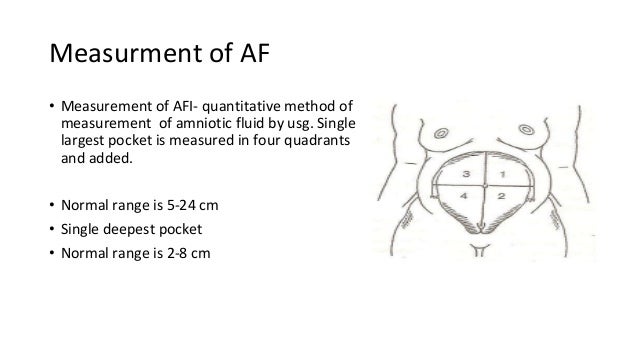

While they vary, some of the most common signs and symptoms of a lowered amniotic fluid volume are: Risk factors for oligohydramnios may include: However, many pregnant women do have risk factors for oligohydramnios. In some cases, women who develop oligohydramnios have no identifiable risk factors, which is why physicians must monitor amniotic fluid levels throughout pregnancy. Maternal problems : Maternal conditions, such as diabetes, dehydration, hypertension, and preeclampsia can impact amniotic fluid levels.Post-date pregnancy : A pregnancy that surpasses 40 weeks is at risk of oligohydramnios because the amniotic fluid can decrease by half after this time.Leaking of amniotic fluid : A tear in the membrane can cause amniotic fluid to leak.Premature rupture of membranes (PROM ): When the water breaks before labor begins.

Birth defects : Certain birth defects cause problems in the fetal urinary tract and kidneys, leading to insufficient urine production.Placental issues : If the placenta isn’t providing enough nutrients for the baby, then the baby may stop recycling fluid, therefore lowering the amniotic fluid.Oligohydramnios can occur any time during pregnancy, but is most commonly diagnosed in the third trimester. Placental complications can cause oligohydramnios. Oligohydramnios, a decrease in the levels of amniotic fluid, is a serious health risk to the baby. The volume of amniotic fluid increases as the pregnancy progresses and reaches its peak at about 34 weeks. The baby “breathes” and swallows amniotic fluid. At approximately 20 weeks, the baby’s urine becomes the primary substance. Īt the earliest stage of development, amniotic fluid consists mainly of water. Amniotic fluid also provides a cushion around the baby and umbilical cord to prevent injuries like cord compression and oxygen deprivation. Located in the amniotic sac (the womb), amniotic fluid protects and provides nutrients to the developing baby that help it mature, grow, and maintain a consistent body temperature. Oligohydramnios and medical malpracticeĪmniotic fluid is the liquid that surrounds the fetus during pregnancy.Managing oligohydramnios throughout pregnancy.Roughly 4% of pregnant women are diagnosed with oligohydramnios. Oligohydramnios occurs when the amniotic fluid level is too low. FLOC & NSDA 2022 Legal Oratory ScholarshipĪmniotic fluid is a protective barrier surrounding a baby in the amniotic sac, or womb.


 0 kommentar(er)
0 kommentar(er)
